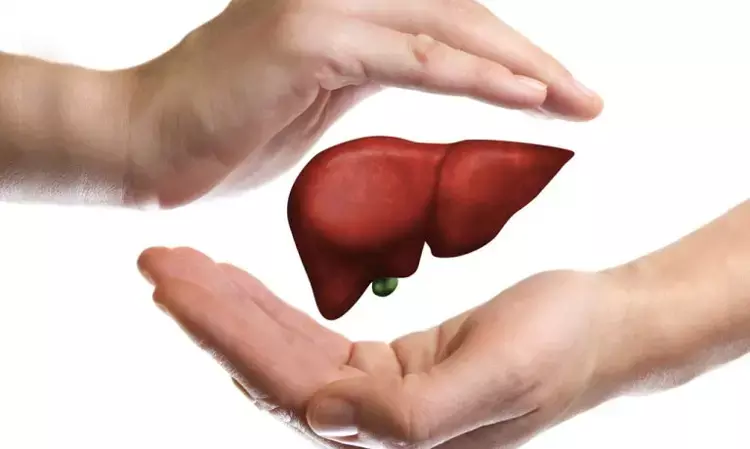- Home
- Medical news & Guidelines
- Anesthesiology
- Cardiology and CTVS
- Critical Care
- Dentistry
- Dermatology
- Diabetes and Endocrinology
- ENT
- Gastroenterology
- Medicine
- Nephrology
- Neurology
- Obstretics-Gynaecology
- Oncology
- Ophthalmology
- Orthopaedics
- Pediatrics-Neonatology
- Psychiatry
- Pulmonology
- Radiology
- Surgery
- Urology
- Laboratory Medicine
- Diet
- Nursing
- Paramedical
- Physiotherapy
- Health news
- Fact Check
- Bone Health Fact Check
- Brain Health Fact Check
- Cancer Related Fact Check
- Child Care Fact Check
- Dental and oral health fact check
- Diabetes and metabolic health fact check
- Diet and Nutrition Fact Check
- Eye and ENT Care Fact Check
- Fitness fact check
- Gut health fact check
- Heart health fact check
- Kidney health fact check
- Medical education fact check
- Men's health fact check
- Respiratory fact check
- Skin and hair care fact check
- Vaccine and Immunization fact check
- Women's health fact check
- AYUSH
- State News
- Andaman and Nicobar Islands
- Andhra Pradesh
- Arunachal Pradesh
- Assam
- Bihar
- Chandigarh
- Chattisgarh
- Dadra and Nagar Haveli
- Daman and Diu
- Delhi
- Goa
- Gujarat
- Haryana
- Himachal Pradesh
- Jammu & Kashmir
- Jharkhand
- Karnataka
- Kerala
- Ladakh
- Lakshadweep
- Madhya Pradesh
- Maharashtra
- Manipur
- Meghalaya
- Mizoram
- Nagaland
- Odisha
- Puducherry
- Punjab
- Rajasthan
- Sikkim
- Tamil Nadu
- Telangana
- Tripura
- Uttar Pradesh
- Uttrakhand
- West Bengal
- Medical Education
- Industry
Severe NAFLD tied to subclinical coronary atherosclerosis risk: Study

Severe Non-alcoholic Fatty liver disease is associated with a high risk of subclinical atherosclerosis, independent of Framingham's risk score (FRS) and body fat percentage, finds a new study published in the Journal of clinical gastroenterology and hepatology.
The subclinical coronary atherosclerosis was measured by coronary CT Angiography (CTA) and coronary artery calcium (CAC) scans.
Researchers lead by Min Seo Kim in a retrospective study tried to elucidate the link between the subclinical coronary artery disease (CAD) and NAFLD severity in real-world Asian patients. In 2018, total participants were 972 who were undergoing regular health inspections, abdominal sonography and angiography of coronary CT but in the final cohort 812 adults were included.
There were statistically significant differences in specific baseline characteristics, including laboratory and anthropometric measurements and coronary artery findings.
The prevalence of susceptible plaques and subclinical coronary atherosclerosis substantially increased with NALFD severity.
In terms of subclinical coronary atherosclerosis, no significant variances were found in the post-holder analysis with mild vs. moderate NAFLD and normal vs. mild NAFLD.
The severe NFLD was deemed an independent CAC ≥ 100 predictor after adjustment to Framingham risk score and the corporal fat percentage. Severe NAFLD also served as an independent predictor of severe NAFLD and CAD-RADS — every three years.
The gravity of NAFLD, regardless of the FRS score and body fat percentage, is closely related with subclinical coronary atherosclerosis, as evaluated via coronary CT and CAC scans. Steps urge that physicians aggressively care for [patients with NAFLD's severe degree] and provide real-world ultrasound health-care inspection information on the high risk of coronary atherosclerosis, the researchers concluded.
Reference
Kim, M. S., Jung, S. Y., Lee, S. W., Li, H., Koyanagi, A., Kronbichler, A., Dragioti, E., Tizaoui, K., Wasuwanich, P., Hong, S. H., Ghayda, R. A., Yoo, H. W., Kim, H., Jacob, L., Salem, J.-E., Kostev, K., Shin, Y. H., Kim, S. Y., Gamerith, G., … Smith, L. (2021). Hepatobiliary Adverse Drug Reactions Associated With Remdesivir: The WHO International Pharmacovigilance Study. Clinical Gastroenterology and Hepatology, 19(9), 1970-1972.e3. https://doi.org/10.1016/j.cgh.2021.04.039
Medical Dialogues consists of a team of passionate medical/scientific writers, led by doctors and healthcare researchers. Our team efforts to bring you updated and timely news about the important happenings of the medical and healthcare sector. Our editorial team can be reached at editorial@medicaldialogues.in.
Dr Kamal Kant Kohli-MBBS, DTCD- a chest specialist with more than 30 years of practice and a flair for writing clinical articles, Dr Kamal Kant Kohli joined Medical Dialogues as a Chief Editor of Medical News. Besides writing articles, as an editor, he proofreads and verifies all the medical content published on Medical Dialogues including those coming from journals, studies,medical conferences,guidelines etc. Email: drkohli@medicaldialogues.in. Contact no. 011-43720751


